
William Morris was a British textile designer, poet, novelist, translator, and socialist activist associated with the British Arts and Crafts Movement. He was a major contributor to the revival of traditional British textile arts and methods of production. His literary contributions helped to establish the modern fantasy genre, while he helped win acceptance of socialism in fin de siècle Great Britain.

Edward I, also known as Edward Longshanks and the Hammer of the Scots, was King of England from 1272 to 1307. Before his accession to the throne, he was commonly referred to as The Lord Edward. The first son of Henry III, Edward was involved from an early age in the political intrigues of his father's reign, which included an outright rebellion by the English barons. In 1259 he briefly sided with a baronial reform movement, supporting the Provisions of Oxford. After reconciliation with his father, however, he remained loyal throughout the subsequent armed conflict, known as the Second Barons' War. After the Battle of Lewes, Edward was hostage to the rebellious barons, but escaped after a few months and defeated the baronial leader Simon de Montfort at the Battle of Evesham in 1265. Within two years the rebellion was extinguished and, with England pacified, Edward joined the Ninth Crusade to the Holy Land. He was on his way home in 1272 when he was informed that his father had died. Making a slow return, he reached England in 1274 and was crowned at Westminster Abbey.

The Arts and Crafts movement was an international trend in the decorative and fine arts that developed earliest and most fully in the British Isles and subsequently spread across the British Empire and to the rest of Europe and America.
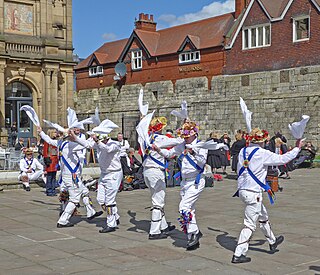
Morris dancing is a form of English folk dance usually accompanied by music. It is based on rhythmic stepping and the execution of choreographed figures by a group of dancers, usually wearing bell pads on their shins. Implements such as sticks, swords and handkerchiefs may also be wielded by the dancers. In a small number of dances for one or two people, steps are near and across a pair of clay tobacco pipes laid one across the other on the floor. They clap their sticks, swords, or handkerchiefs together to match with the dance.
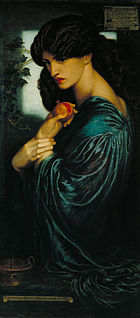
The Pre-Raphaelite Brotherhood was a group of English painters, poets, and art critics, founded in 1848 by William Holman Hunt, John Everett Millais, Dante Gabriel Rossetti, William Michael Rossetti, James Collinson, Frederic George Stephens and Thomas Woolner who formed a seven-member "Brotherhood" modelled in part on the Nazarene movement. The Brotherhood was only ever a loose association and their principles were shared by other artists of the time, including Ford Madox Brown, Arthur Hughes and Marie Spartali Stillman. Later followers of the principles of the Brotherhood included Edward Burne-Jones, William Morris and John William Waterhouse.
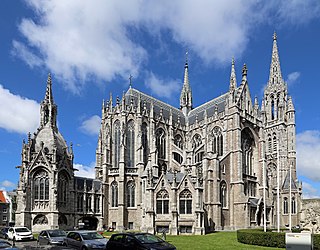
Gothic Revival is an architectural movement that began in the late 1740s in England. Its momentum grew in the early 19th century, when increasingly serious and learned admirers of neo-Gothic styles sought to revive medieval Gothic architecture, in contrast to the neoclassical styles prevalent at the time. Gothic Revival draws features from the original Gothic style, including decorative patterns, finials, lancet windows, hood moulds and label stops. By the mid-19th century, it was established as the preeminent architectural style in the Western world.
Border Morris is a collection of individual local dances from villages along the English side of the Wales–England border in the counties of Herefordshire, Worcestershire and Shropshire. They are part of the Morris dance tradition.
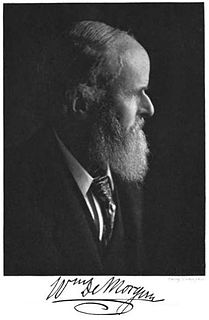
William Frend De Morgan was an English potter, tile designer and novelist. A lifelong friend of William Morris, he designed tiles, stained glass and furniture for Morris & Co. from 1863 to 1872. His tiles are often based on medieval designs or Islamic patterns, and he experimented with innovative glazes and firing techniques. Galleons and fish were popular motifs, as were "fantastical" birds and other animals. Many of De Morgan's tile designs were planned to create intricate patterns when several tiles were laid together.

The Society for the Protection of Ancient Buildings (SPAB) is an amenity society founded by William Morris, Philip Webb and others, in 1877; to oppose what they saw as destructive 'restoration' of ancient buildings then occurring in Victorian England; 'ancient' being used in the wider sense of 'very old' rather than the more usual modern one of 'pre-medieval'.
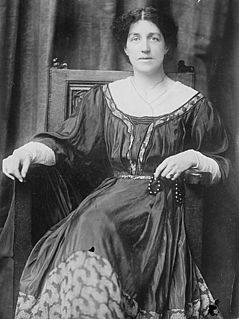
Mary "May" Morris was an English artisan, embroidery designer, jeweller, socialist, and editor. She was the younger daughter of the Pre-Raphaelite artist and designer William Morris and his wife and artists' model, Jane Morris.

Art needlework was a type of surface embroidery popular in the later nineteenth century under the influence of the Pre-Raphaelites and the Arts and Crafts Movement.

Morris, Marshall, Faulkner & Co. (1861–1875) was a furnishings and decorative arts manufacturer and retailer founded by the artist and designer William Morris with friends from the Pre-Raphaelites. With its successor Morris & Co. (1875–1940) the firm's medieval-inspired aesthetic and respect for hand-craftsmanship and traditional textile arts had a profound influence on the decoration of churches and houses into the early 20th century.

Châteauesque is a Revivalist architectural style based on the French Renaissance architecture of the monumental châteaux of the Loire Valley from the late fifteenth century to the early seventeenth century.
Modern Library's 100 Best Novels is a 1998 list of the best English-language novels published during the 20th century, as selected by Modern Library from among 400 novels published by Random House, which owns Modern Library. The purpose of the list was to "bring the Modern Library to public attention" and stimulate sales of its books. A separate Modern Library 100 Best Nonfiction list of the 100 best non-fiction books of the 20th century was created the same year.

Kelmscott House is a Georgian brick mansion at 26 Upper Mall in Hammersmith, overlooking the River Thames. It was the London home of English textile designer, artist, writer and socialist William Morris from October 1878 until his death in October 1896 and is Grade II* listed by Historic England.

Eaton Hastings is a village and civil parish beside the River Thames about two-and-a-half miles (4 km) north-west of Faringdon. It was in Berkshire until the 1974 boundary changes transferred it to Oxfordshire. Eaton Hastings was once much larger than it is today, when it can be seen as an all-but-deserted medieval village. The 2001 Census gave the parish population as 81.

Pennard Castle is a ruined castle, near the modern village of Pennard on the Gower Peninsula, in south Wales. The castle was built in the early 12th century as a timber ringwork following the Norman invasion of Wales. The walls were rebuilt in stone by the Braose family at the turn of the 13th and 14th centuries, including a stone gatehouse. Soon afterwards, however, encroaching sand dunes caused the site to be abandoned and it fell into ruin. Restoration work was carried out during the course of the 20th century and the remains of the castle are now protected under UK law as a Grade II* listed building.
The William Morris Society was founded in 1955 in London, England. The Society's office and museum are located at Kelmscott House, Hammersmith, where Morris lived from 1879 until his death in 1896.
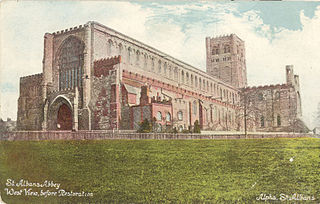
The Victorian restoration was the widespread and extensive refurbishment and rebuilding of Church of England churches and cathedrals that took place in England and Wales during the 19th-century reign of Queen Victoria. It was not the same process as is understood today by the term building restoration.

Oakwood Hall, Bingley, West Yorkshire is a 19th-century mansion with substantial interior fittings by the Victorian architect William Burges. The hall was constructed in 1864 by Knowles and Wilcox of Bradford for Thomas Garnett, a prosperous textile merchant. The style is "conventionally dour Gothic"

















